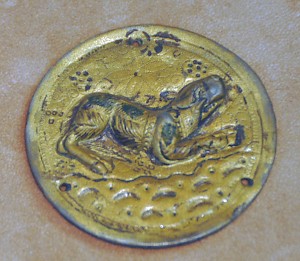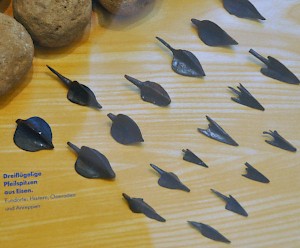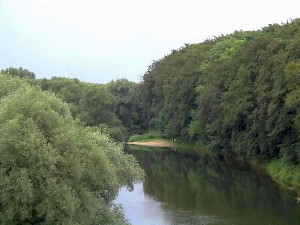Oberaden
Q577724Oberaden: town in modern Germany, site of the main Roman fortress during the Germanic Wars of Drusus.

The identification of a Roman fortress at Oberaden in 1905 was one of the most important archaeological discoveries in Germany ever. The military settlement, on a hilltop three kilometers south of the Lippe, could be dated to the age of Drusus, the Roman prince who conquered the Lippe valley in the years 12-9 BCE. Later, the fortress could even be dated more accurately (by means of dendrochronology) to the autumn of 11, which enabled scholars to identify the fortress with a stronghold that is mentioned by the Greek historian Cassius Dio:
At the beginning of spring Drusus sent out again for the war, crossed the Rhine, and subjugated the Usipetes. He bridged the Lippe, invaded the country of the Sugambrians, and advanced through it into the country of the Cheruscians, as far as the Weser. [...] He would have crossed the Weser also, had he not run short of provisions, and had not the winter set in [...]. Consequently he proceeded no farther, but retired to friendly territory, encountering great dangers on the way. For the enemy harassed him everywhere by ambuscades, and once they shut him up in a narrow pass and all but destroyed his army; indeed, they would have annihilated them, had they not conceived a contempt for them, as if they were already captured and needed only the finishing stroke, and so come to close quarters with them in disorder. This led to their being worsted, after which they were no longer so bold, but kept up a petty annoyance of his troops from a distance, while refusing to come nearer. Drusus accordingly conceived a scorn of them in his turn and fortified a stronghold against them at the point where the Lippe and the Eliso unite.note

The three legions that were stationed here probably arrived from Nijmegen and Neuss. The Roman soldiers, who had been recruited in northern Italy and southern France, lived in relative luxury. Figs and olives were imported from the Mediterranean, and archaeologists even discovered pepper, which was imported -through the Mediterranean of course- all the way from India.
In 9, Drusus died. He was succeeded by his brother Tiberius, a capable general who understood that Germania was too poor to be a valuable part of the empire. On the other hand, the armies could not be recalled after the death of Drusus: that would look as if the Romans had been defeated. So, he attacked the Sugambrians and deported them to the west bank of the Rhine. They became known as the Cugerni and lived in farms near Xanten, guarded by the Eighteenth Legion.

Now that the Sugambrians had been defeated, the soldiers of Oberaden were transferred to a new and better camp at Haltern, where the presence of the Nineteenth legion is attested. It is possible that this unit had been in Oberaden too, and it is not too bold a speculation to assume that the Eighteenth had been at Oberaden as well. The third unit at this major may or may not have been the Seventeenth, which seems to have been united in a task force together with legions XVIII and XIX, and their auxiliary units and allies.
It should be noted, however, that Drusus commanded five legions, and that when Oberaden was founded, a two-legion base was built at Holsterhausen. Anyhow, whatever the units that resided at Oberaden, it is certain that the fortress was evacuated when Haltern was founded.

Near Oberaden is Beckinghausen. The trees to the right of the picture are on top of a Roman river port that must have been part of the Oberaden military complex.
Today, nothing can be seen of the ancient settlement. On the site of the Oberaden HQs is a park. Many finds are on display in the Westfälisches Römermuseum, in nearby Haltern.